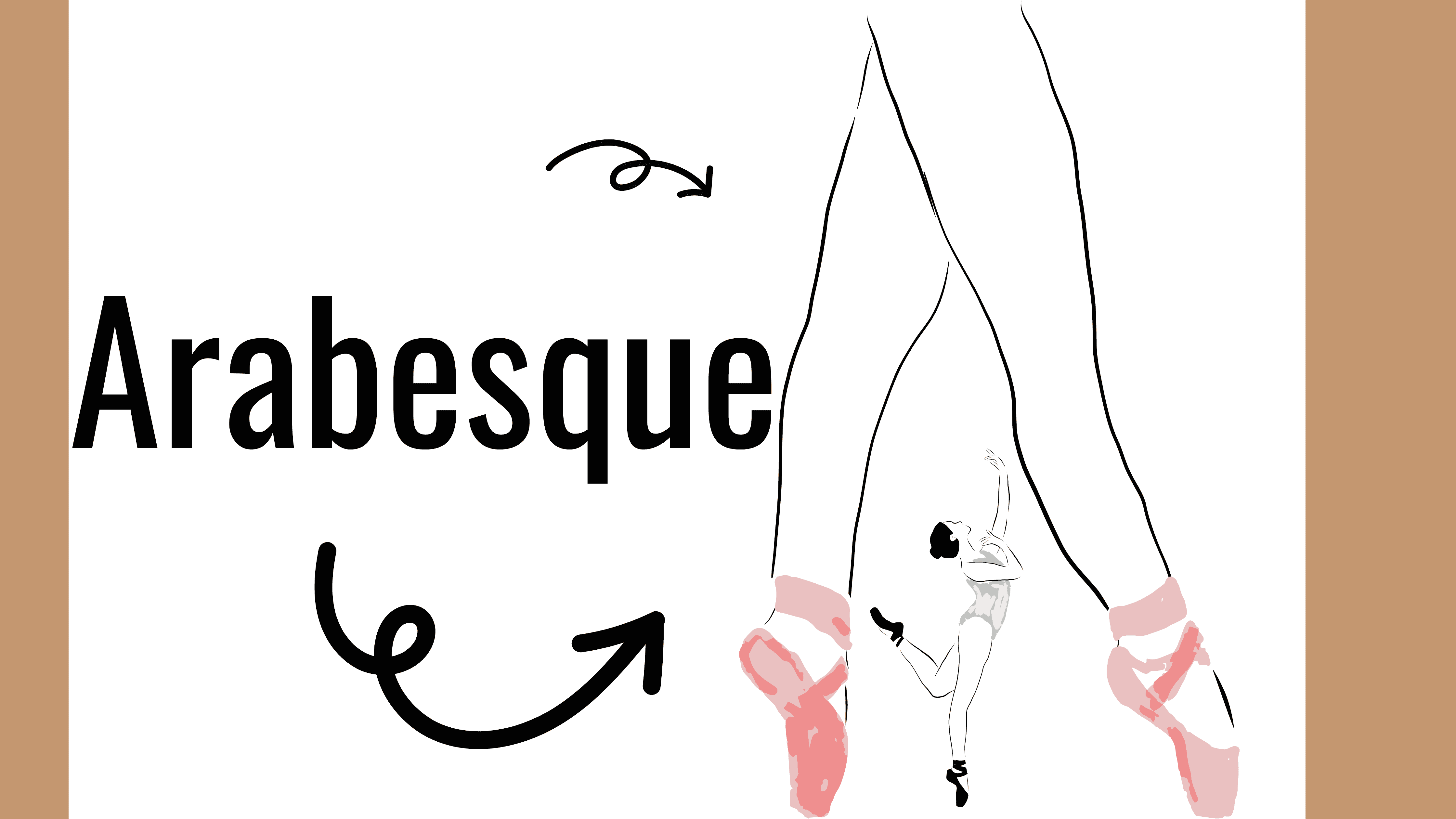Learning the etymology of ballet words can help you visualize the intention of the position or exercise. It also makes for great trivia for your next class! Let’s dissect the word Arabesque [air-uh-besk].

What it looks like in ballet: A classical position in which the dancer is balanced on one supporting leg with the working leg lifted behind them.
Etymology: According to the Online Etymology Dictionary, the word arabesque originated in 1610 and takes its name from a form of Moorish ornament. From there, the word became the French arabesque, then into Italian arabesco, both referring to an Arabic decoration or design. It wasn’t used as a ballet term until 1830. In 1853, the Robert Schumman, a German composer, titled a song “Arabeske” for its meaning of elaborate decoration.
How to use it in barre: Arabesque battements using the barre (see Chapter 8 of the IBBFA Barre Certification Level 1 manual).
Applying Arabesque in Barre Practice:
Incorporating arabesque movements into your barre practice adds an element of grace and elegance to your workout routine. Arabesque battements, where the working leg is lifted behind the body, help improve balance, flexibility, and strength in the supporting leg and core muscles. By engaging in arabesque exercises at the barre, you can channel the fluidity and poise of ballet dancers while sculpting and toning your body.
Expanding Your Vocabulary:
As you delve deeper into the world of ballet and barre, take the opportunity to explore the etymology of other dance terms. From plié to grand jeté, each word carries its own history and significance, offering insights into the evolution of dance and movement. By expanding your vocabulary and understanding of ballet terminology, you can enhance your appreciation for the art form and deepen your connection to the centuries-old tradition of dance.
Conclusion:
The journey of unraveling the etymology of ballet words like “arabesque” is a testament to the rich tapestry of history, culture, and artistry that defines the world of dance. From its origins as a Moorish ornament to its evolution into a cherished ballet position, the arabesque embodies the timeless beauty and grace of classical ballet. By exploring the multifaceted meanings and applications of arabesque, both in and outside the studio, we gain a deeper understanding of its significance and continue to celebrate its enduring legacy in the world of dance.
Other meanings of the word today: According to Dictionary.com, the word defines a short, elaborate music piece for piano, a spiraling literary motif, and any ornament (rug, mosaic, etc.) with fanciful patterns of flowers, fruits, animals, and figures.

